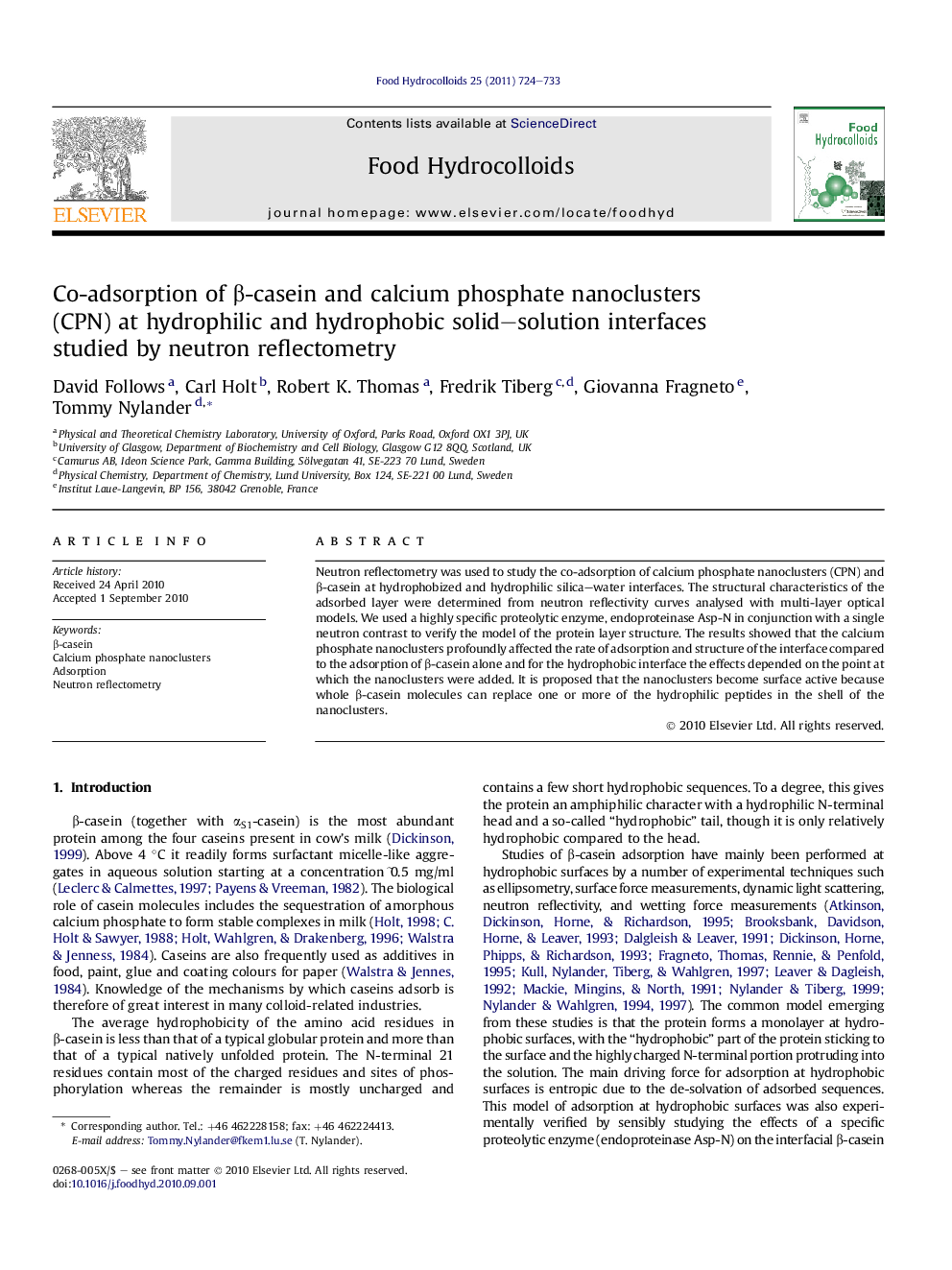| Article ID | Journal | Published Year | Pages | File Type |
|---|---|---|---|---|
| 605197 | Food Hydrocolloids | 2011 | 10 Pages |
Neutron reflectometry was used to study the co-adsorption of calcium phosphate nanoclusters (CPN) and β-casein at hydrophobized and hydrophilic silica–water interfaces. The structural characteristics of the adsorbed layer were determined from neutron reflectivity curves analysed with multi-layer optical models. We used a highly specific proteolytic enzyme, endoproteinase Asp-N in conjunction with a single neutron contrast to verify the model of the protein layer structure. The results showed that the calcium phosphate nanoclusters profoundly affected the rate of adsorption and structure of the interface compared to the adsorption of β-casein alone and for the hydrophobic interface the effects depended on the point at which the nanoclusters were added. It is proposed that the nanoclusters become surface active because whole β-casein molecules can replace one or more of the hydrophilic peptides in the shell of the nanoclusters.
Graphical abstractFigure optionsDownload full-size imageDownload as PowerPoint slide
